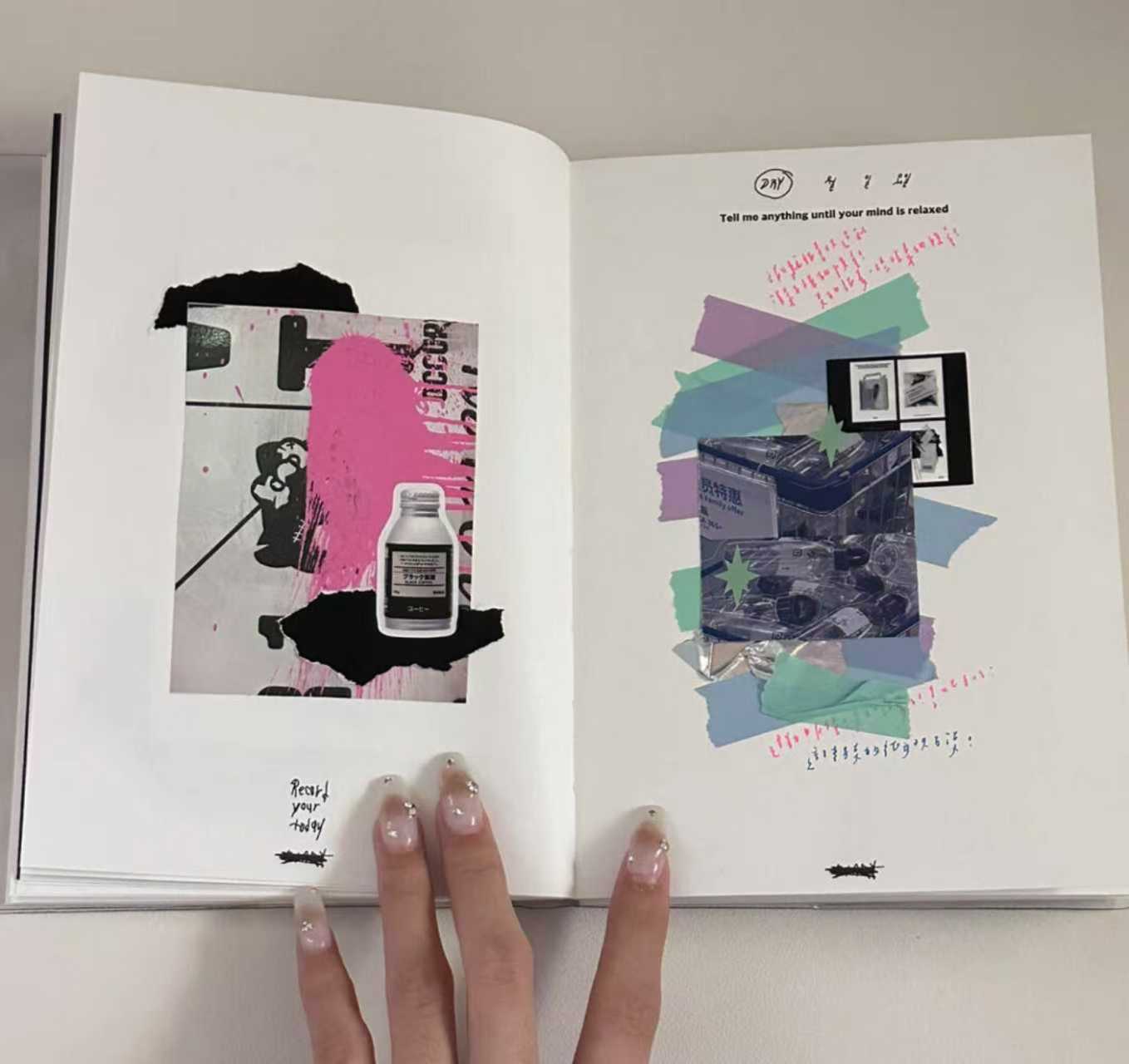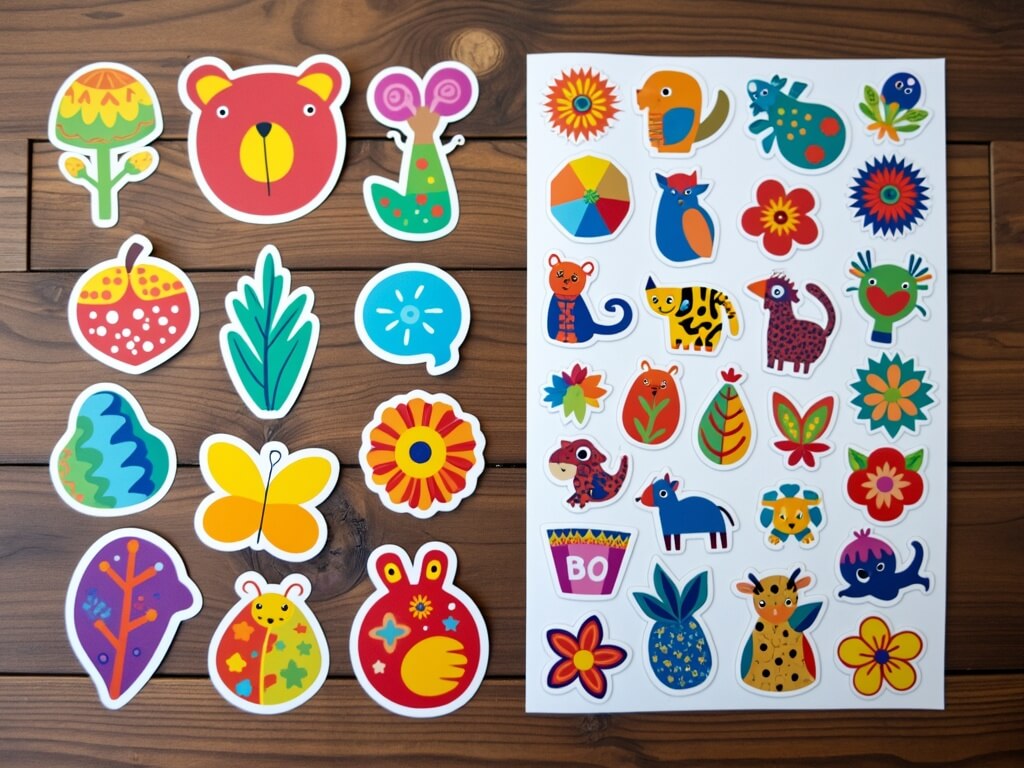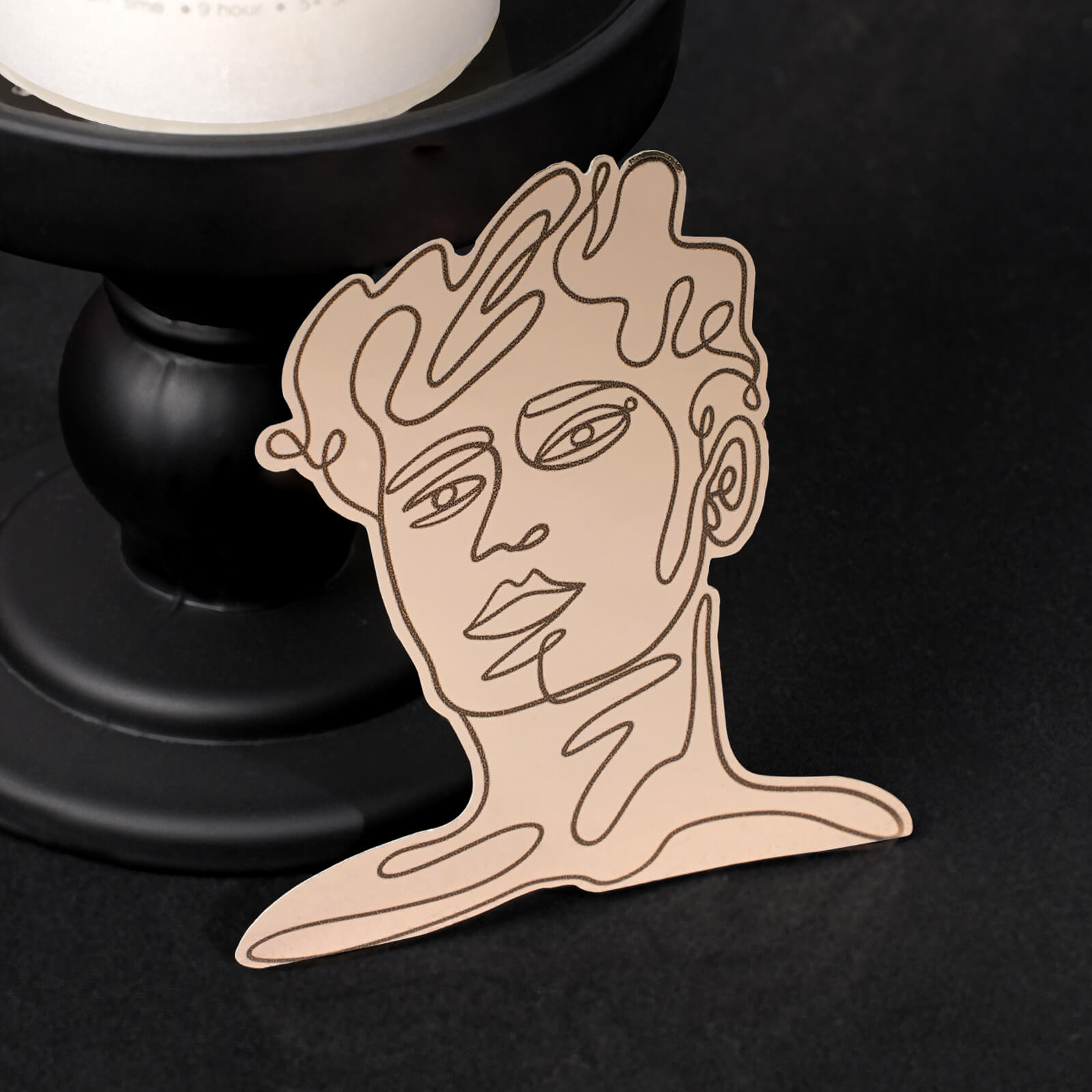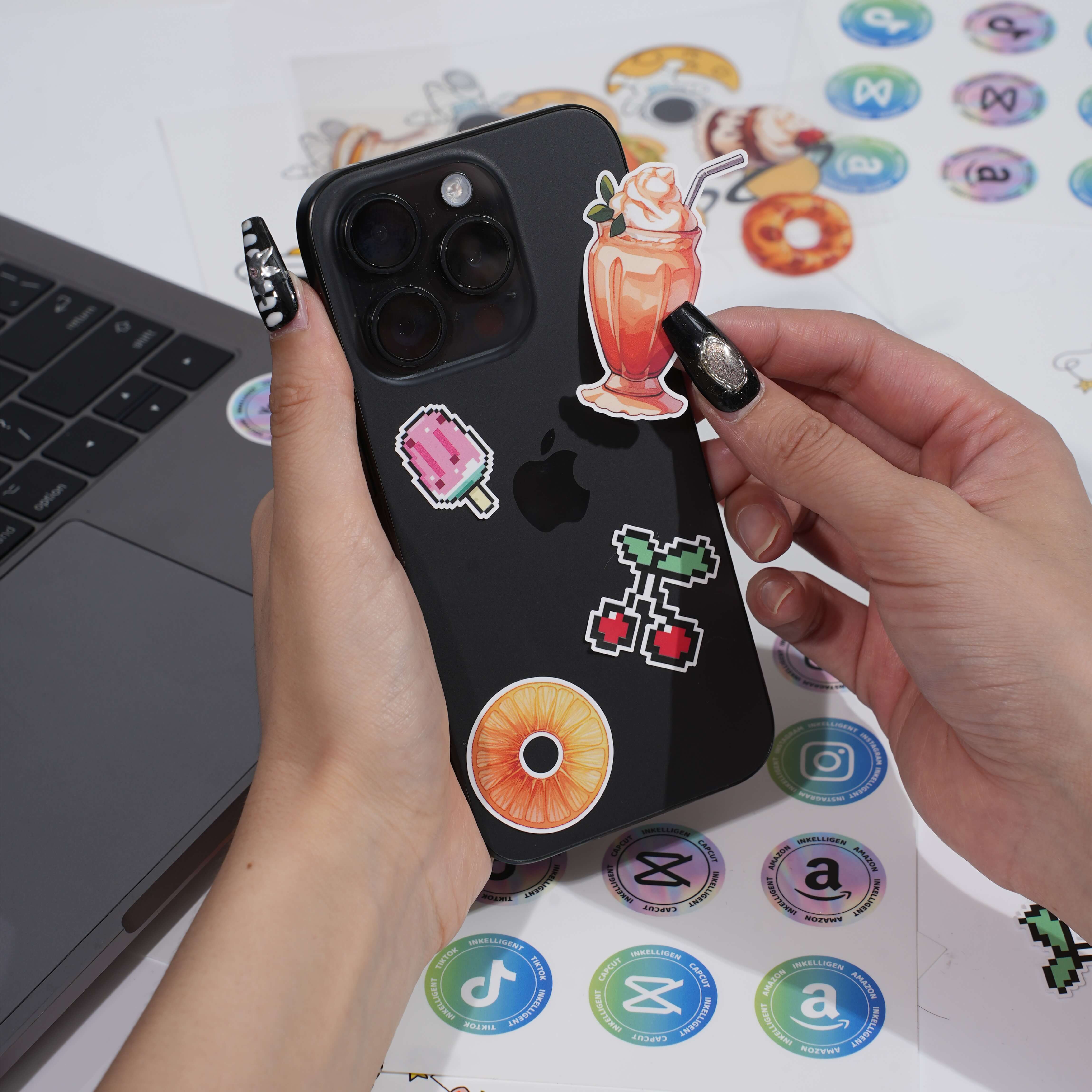By using stickers to enhance the practicality and aesthetics of the ledger, functional stickers can be selected to organize content and make information clearer; At the same time, use themed or decorative stickers to embellish the page and enhance the visual effect. In addition, pay attention to the coordination between the size, color, and page layout of the stickers to ensure that the overall design is both practical and aesthetically pleasing.
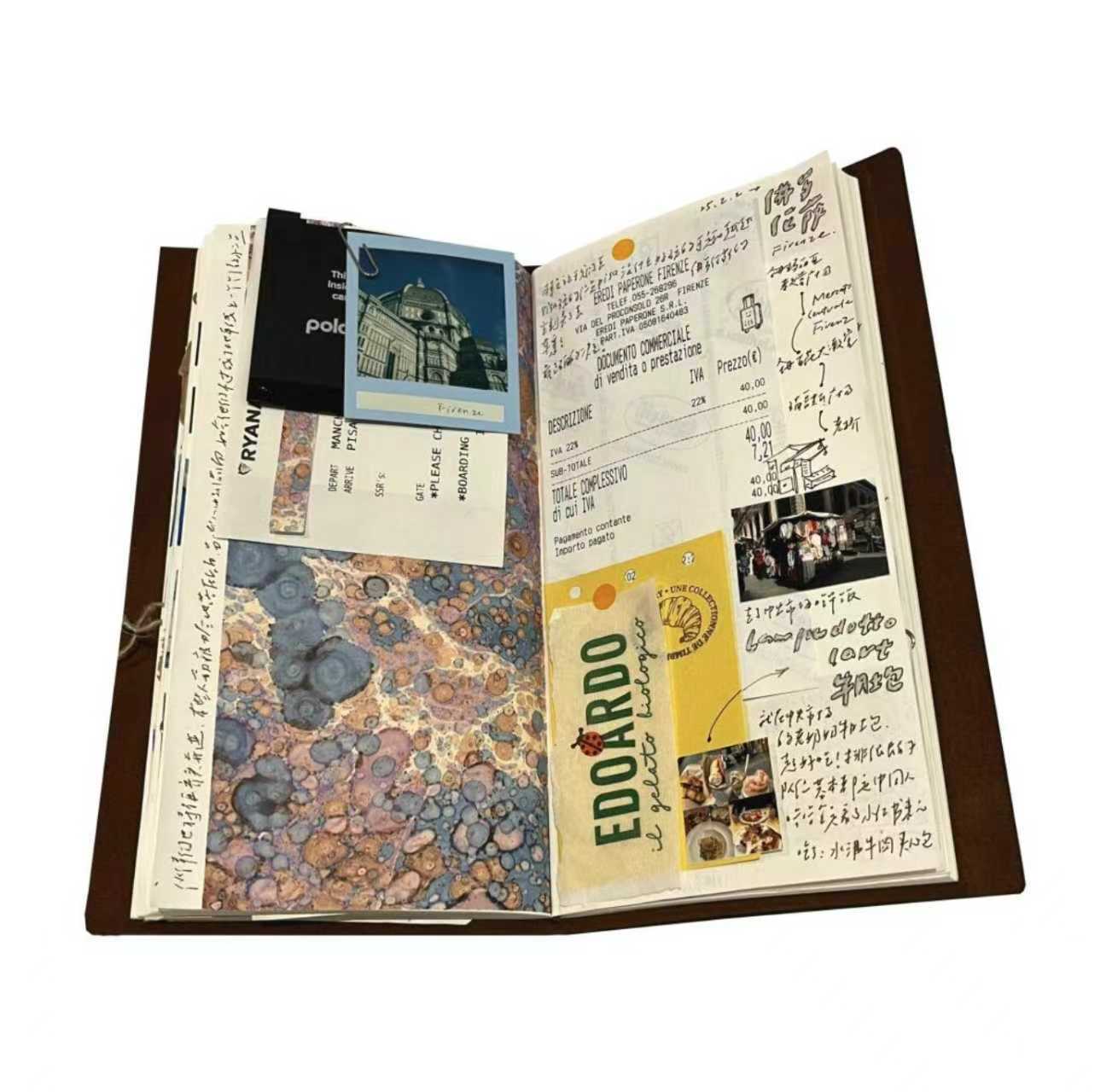
What is a handwritten diary
A handwritten diary is a type of notebook that uses paper as a medium to record daily life, schedule, goal planning, creative inspiration, and other content. It can be combined with various forms such as text, pictures, stickers, photos, etc., making it a practical and artistic way of recording. Handbooks are not only recording tools, but also an important way for many people to express their personality, organize their lives, and relieve emotions.
What are the main functions of a handwritten diary?
- Schedule management
Used for planning daily, weekly, or monthly tasks and goals, similar to a paper-based time management tool.
Can record important meetings, to-do lists, birthdays, holidays, etc.
- Life records
Record the bits and pieces of life, such as travel diaries, food records, and emotional experiences.
Save beautiful memories in life through handwritten text, photos, stickers, and other means.
- Creative expression
Handbooks can serve as a medium for creativity, used for practicing calligraphy, illustration, collage design, and more.
Show personal creativity and style through different decorations and layouts.
- Emotional expression
As a private record, a manual account can record emotions, thoughts, and personal growth.
Write down goals, dreams, or diary content to help clarify thoughts and relieve stress.
- Learning tools
handwritten diary can also be used for organizing study notes, such as recording course highlights, knowledge frameworks, study plans, etc.
What are the components of a handwritten diary?
Time management section
Monthly plan: Set monthly goals and important matters.
Weekly plan: Detailed list of tasks and arrangements for each week.
Daily record: Record the to-do list, schedule, and completion status for the day.
Free recording section
Diary: Record the mood, events, or thoughts of the day.
Inspiration: Save creative ideas, design sketches, or writing exercises.
Collection: Attach travel receipts, photos, stickers, and other commemorative items.
Decorative elements
Stickers: Used to decorate pages and make the account more visually appealing.
Adhesive tape: such as paper tape, used to separate areas or add color.
Illustration: Hand drawn illustrations or graffiti to add a personalized style.
Tools and materials
Handbooks: There are various types of hand books available on the market, such as horizontal, grid, and non grid notebooks.
Pen: colored pen, marker pen, watercolor pen, etc., used for writing and decoration.
Other tools: such as scissors, stamps, templates, etc. to assist in production.
Classification of handwritten diary
Functional classification
Schedule manual account: focuses on schedule planning and time management.
Life Handbook: Record the details of life and emotional stories.
Learning Handbook: used to record study notes and review plans.
Travel Handbook: records observations, photos, and receipts during travel.
Style classification
Extremely simple style: focusing on simple lines and layout, emphasizing practicality.
Retro style: Using retro stickers, photos, and decorations to create a nostalgic atmosphere.
Fresh Wind: Using bright and soft colors and natural elements to showcase a sense of ease.
Cartoon style: Combining cartoon illustrations and cute stickers, suitable for young people.
Reasons for the popularity of manual accounting
- The combination of practicality and artistry
handwritten diary can be used for both time management and creative expression tools.
- Relieve stress and express emotions
Recording emotions and thoughts in a ledger can help people release stress and clarify their thoughts.
- Experience and sense of achievement
The process of handwriting makes people more engaged, and completing a beautifully crafted page can bring a sense of achievement.
- Socializing and Sharing
handwritten diary is widely popular on social media, where people often share their bookkeeping works to exchange ideas.
How to start making a handwritten diary
- Choose a tool
Choose a suitable notebook and favorite stationery (such as colored pens, stickers, tape) for yourself.
- Determine the theme
Choose a theme based on the goal, such as schedule management, travel records, or study plans.
- Design layout
You can refer to online templates or design your own layout for layout planning.
- Decoration and Recording
Decorate the page with stickers, tape, illustrations, etc., while recording the content.
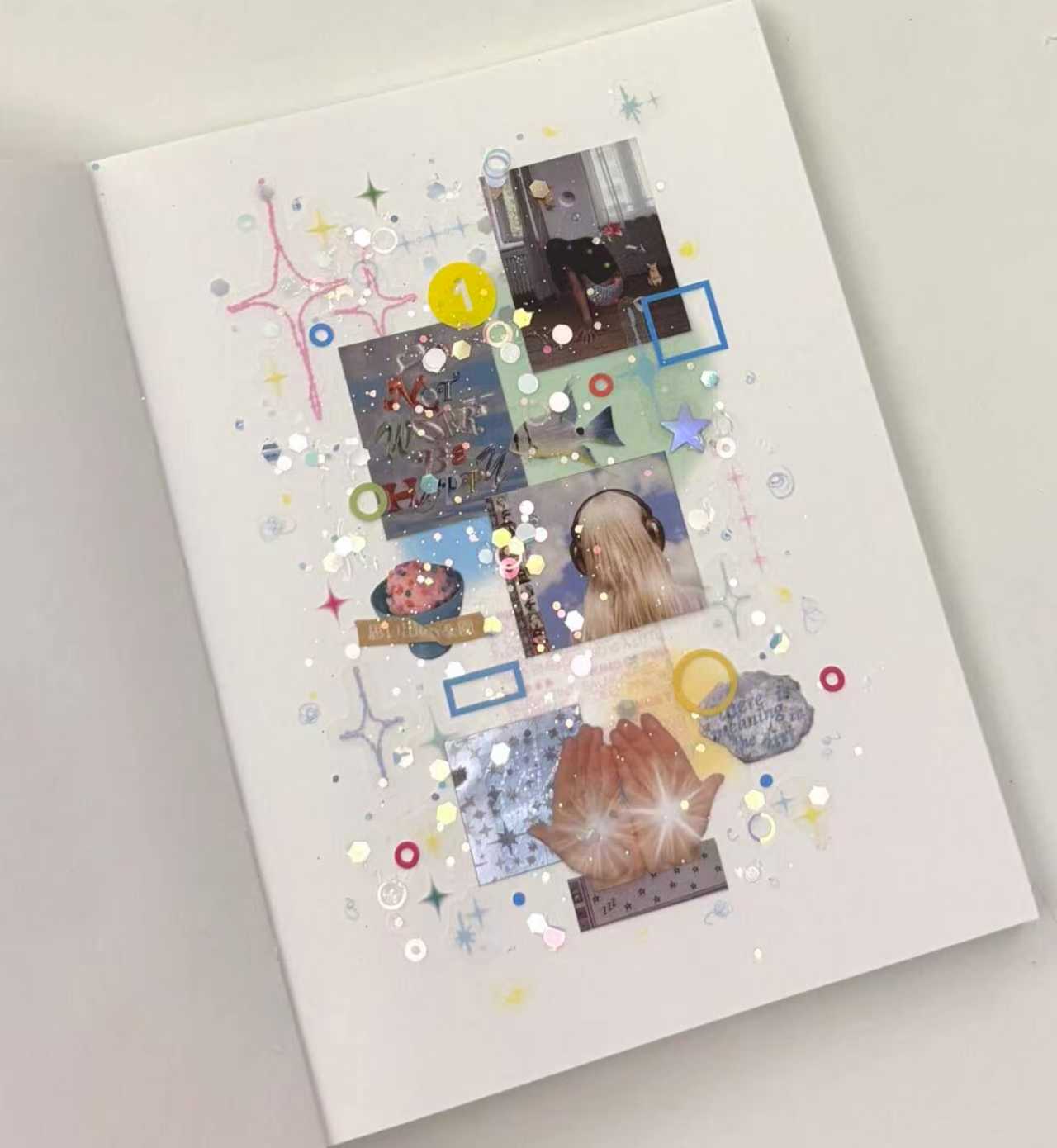
Which stickers are suitable for making handwritten diary content?
In the production of hand books, stickers are very important decorative elements. They can enhance the beauty and fun of hand books, and also help classify and label content.
Functional stickers
These stickers are mainly used for marking and planning, enhancing the practicality and management ability of the ledger.
Time management stickers
Calendar sticker: Contains small-sized monthly or weekly calendars for marking dates.
Timeline stickers: time slots such as morning, afternoon, evening, etc.
Schedule reminder stickers: labels such as "To Do", "Important", "Deadline", etc.
Classification label stickers
Theme tags: such as "Sports", "Travel", "Learning", "Shopping List" and other classified stickers.
Priority stickers: status markers such as "high priority", "normal", "completed", etc.
Arrow and symbol stickers: small arrows, asterisks, check marks, etc. used to guide or connect content.
Number and letter stickers
Digital stickers: used for date marking, habitual check-in, etc.
Letter stickers: can be used for title decoration or word spelling.
Decorative stickers
Decorative stickers are used to beautify the account page and enhance the overall visual effect.
Flower and Nature Stickers
Flower stickers: various flower patterns such as roses, sunflowers, and starry sky.
Natural element stickers: such as leaves, landscapes, butterflies, stars, etc.
Cartoon and Cute Style Stickers
Cartoon character stickers: cartoon characters such as cats, bears, rabbits, etc.
Food stickers: cute patterns such as coffee cups, cakes, ice cream, etc.
Color blocks and border stickers
Color block stickers: Long, round, and rectangular stickers in solid or gradient colors, used for image segmentation.
Border stickers: such as lace borders or small frames, used to decorate the title or photo area.
Retro and Artistic Stickers
Retro style stickers: elements such as old envelopes, stamps, ancient maps, retro stamps, etc.
Literary style stickers: such as handwritten fonts, pen illustrations, classical patterns, etc.
Theme Stickers
Choose appropriate stickers based on the specific theme of the account to enhance content expression and emotional transmission.
Travel themed stickers
Landmark building stickers: such as the Eiffel Tower, Sydney Opera House, etc.
Luggage and map stickers: patterns such as suitcases, compasses, maps, etc.
Ticket stickers: vintage styles such as train tickets and movie tickets.
Festival themed stickers
Spring Festival stickers: elements such as lanterns, lucky words, red envelopes, etc.
Valentine's Day stickers: patterns such as hearts, roses, couple silhouettes, etc.
Christmas stickers: decorations such as Christmas trees, snowflakes, gift boxes, etc.
Study theme stickers
Book and stationery stickers: such as pencils, books, notebooks, etc.
Learning motivation stickers: such as text stickers for "keep up", "work hard", "stay focused", etc.
Subject icon stickers: such as mathematical symbols, chemical test tubes, globes, and other subject elements.
Food themed stickers
Traditional food stickers: such as Chinese Dim sum, sushi, pizza and other food illustrations.
Beverage stickers: cute patterns such as milk tea, coffee, juice, etc.
Interactive Stickers
These stickers add fun and interactivity, enhancing the engagement experience of the handwritten diary.
Check in and habit tracking stickers
Daily clock in stickers: such as dots, squares, and hook patterns, used for habit formation.
Target Progress Stickers: Icons such as "Completed 1/3" and "Target Achieved".
Text dialogue stickers
Dialogue Bubble Stickers: You can write your own feelings or thoughts on them.
Fun text stickers: such as "Today is great", "Happy holiday", "Don't forget to drink water".
Task reward stickers
Reward stickers: such as stars, trophies, smiling faces, etc., used for self reward after completing tasks.
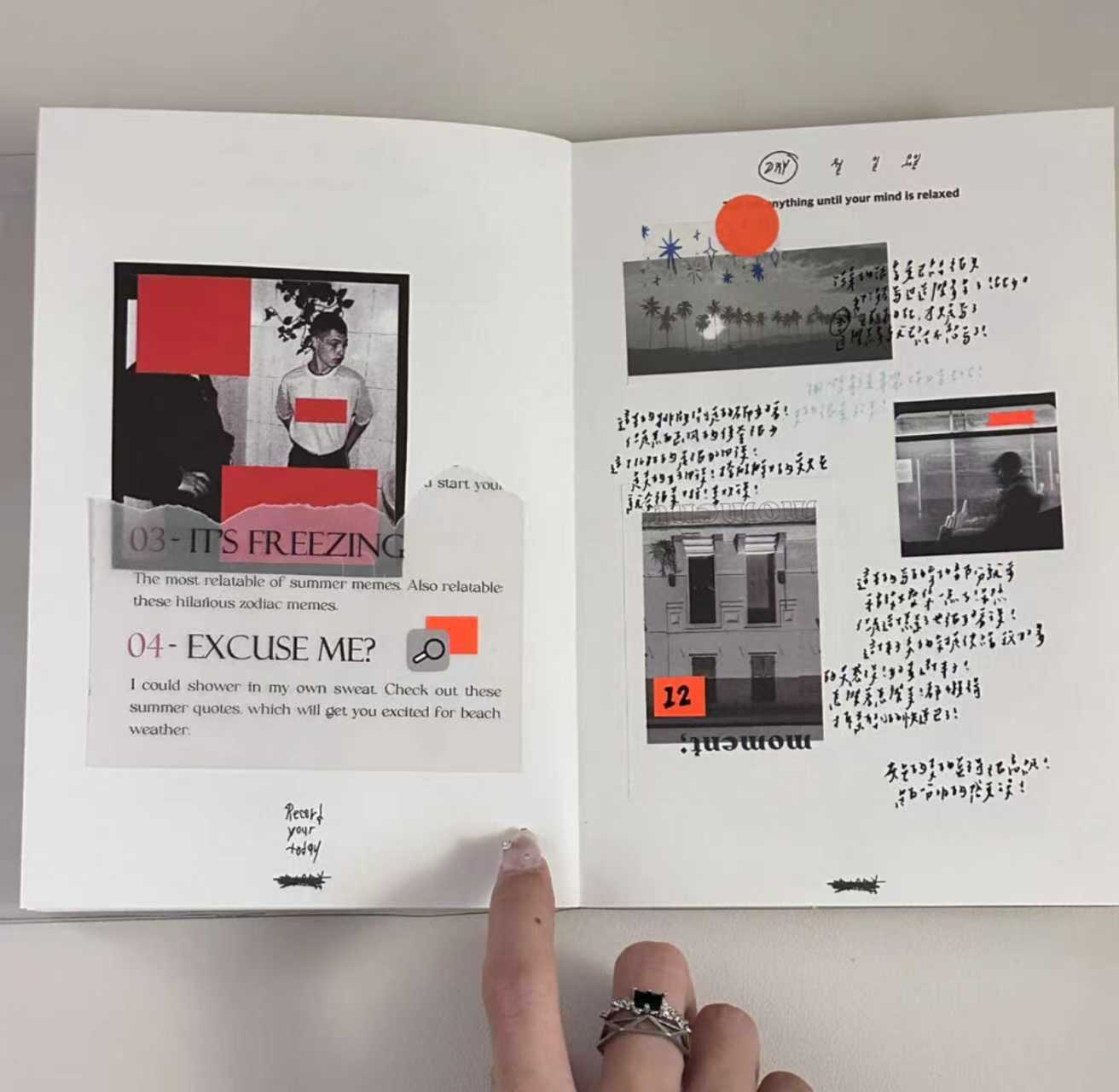
How to avoid excessive use of stickers causing the page to appear cluttered?
Determine the theme and style
The selection and use of stickers need to revolve around a clear theme or style to maintain overall consistency.
Determine the theme
Before starting the decoration, clarify the theme of the page
Plan page: Highlight time management and task tagging.
Travel diary: mainly featuring stickers related to travel, such as maps, landmarks, suitcases, etc.
Holiday themes: such as Christmas and Valentine's Day, decorated with holiday stickers.
Unified style
Choose stickers with the same or similar style
Consistent color matching: For example, stickers with soft tones should avoid mixing high saturation colors.
Consistent pattern style: such as retro style, cute style or minimalist style, avoid mixing multiple styles.
Control the number of stickers
Stickers are just auxiliary decorations, too many stickers will cover up the main content of the handwritten diary.
- Set sticker usage restrictions
3-5 stickers per page are preferred, with the specific quantity adjusted according to the page size.
Leave blank space: Ensure that the page has sufficient blank space to avoid visual overcrowding.
- Highlight key points
Use stickers for important areas such as titles, dividing lines, marking lists, etc.
Avoid stacking too many stickers in the same area and highlight a "visual focus".
Choose the appropriate sticker type
Different types of stickers have different visual effects, choose the appropriate sticker according to the page design.
- Use small-sized stickers
Small stickers are more suitable for handheld devices, used for decoration without taking up too much page space.
Avoid large areas of stickers blocking text or main content.
- Transparent and minimalist stickers
Transparent stickers: reduce visual weight, suitable for minimalist style notebooks.
Simple line stickers or monochrome stickers: easier to integrate with the page than stickers with complex patterns.
- Functional stickers
Use functional stickers (such as to-do boxes, arrows, date markers, etc.) instead of decorative stickers to balance aesthetics and practicality.
Pay attention to the layout and arrangement of stickers
Reasonable placement of stickers can make the page appear neat, orderly, and aesthetically pleasing.
- Follow the page grid
Use grid layout or draw invisible wireframes to ensure that stickers and text are aligned and appear neat.
For example, placing stickers at the corners, borders, or specific sections of the page.
- Create visual guidance
Up and down correspondence: distribute stickers on the top and bottom of the page to avoid being concentrated in one area and causing imbalance.
Symmetric layout: Placing stickers symmetrically on both sides or up and down will make the page more harmonious.
- Segmentation function
Use stickers as dividing lines to distinguish different content areas (such as dates, lists, mood records).
Reflection and Improvement
Review page effect: After completing the page, review the overall layout and think about areas that can be improved.
Reference excellent works: Learn sticker layout and matching techniques by drawing inspiration from the works of online handwritten diary.
Record experience: Summarize which stickers and layouts are most suitable for your accounting style.
What tools are available to help make handwritten diary stickers?
- Printing tools: inkjet printers or laser printers that balance color and efficiency.
- Cutting tools: Scissors and paper cutters are suitable for small-scale production, while automatic cutting machines are suitable for complex designs and mass production.
- Film laminating tool: transparent adhesive film or hot laminating machine, used to protect stickers and increase texture.
- Design tools: digital tablets, tablets, and design software used for creating and editing patterns.
- Material assistance: sticker paper, waterproof film, decorative tools, etc.
By selecting the appropriate tools based on needs and budget, it is easy to produce high-quality stickers!
How to mass produce customized stickers?
·Design check: Ensure that the resolution of the design file is high enough, the color mode is CMYK, and the cutting lines are accurate.
·Material testing: Before mass production, test the sticker effect of different materials and select the most suitable one.
·Sample confirmation: Before submitting for printing, it is necessary to verify the sample to avoid errors in mass production.
·Environmental considerations: Choose biodegradable or environmentally friendly materials to meet the trend of sustainable consumption.
·After sales service: Confirm replenishment and after-sales policies with the printing factory to ensure a smooth production process.
By clarifying requirements, carefully designing, and selecting appropriate production methods, you can efficiently achieve mass production of stickers while balancing creativity and professional effects!
handwritten diary are a tool that integrates planning, recording, and creative expression, which can help manage time and tasks, as well as record life details and showcase personal style. Stickers, as an important decorative element of handwritten diary, not only enhance their practicality through functional design, but also add fun and visual appeal to the pages through themed or beautiful patterns, making the recording process more efficient and creative.
